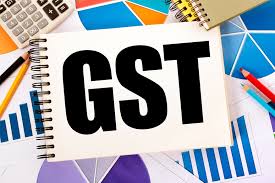GST signals: On April GST collections
The first month of the new financial year has yielded a sharp surge in Goods and Services Tax (GST) collections, taking them well past ₹1.67 lakh crore — the highest, by a wide margin, in the five years since the levy was introduced by subsuming myriad State and central duties. In fact, GST revenues have scaled fresh highs in three of the last four months, having hit ₹1.41 lakh crore in January and ₹1.42 lakh crore in March. Overall GST revenues had grown 30.8% in 2021-22 to ₹14.9 lakh crore, despite slipping below the ₹1 lakh crore mark for two months when the second COVID-19 wave raged. The 20% year-on-year revenue uptick this April could be seen as a comforting signal about 2022-23 revenue prospects for policy makers at the Centre and the States, whose treasuries are fretting about the prospect of income falling off a cliff from this July when the assured compensation for implementing the GST comes to an end. Compensation cess levies will persist till at least March 2026, but they will be used to pay off special borrowings of 2020-21 to bridge revenue shortfalls and recompense States. The Centre needs a mechanism to expedite payment of outstanding compensation dues to States (₹78,700-odd crore, or four months of dues). The Finance Ministry has blamed ‘inadequate balance’ in the Compensation Cess fund, and promised to pay up ‘as and when’ the requisite cess accrues.
If overall GST collections sustain around April levels, a dialogue with States on their pending dues along with those that will accrue from now till June, could become less thorny. But the conversation needs to begin soon. The GST Council, which has not met properly since September 2021, must be convened at the earliest. Higher tax inflows backed by improved compliance, should give the Council more flexibility to approach the impending rationalisation of the GST rate slabs, beyond a mere scramble to fill coffers and factor in larger socio-economic considerations. The Centre, which called the April inflows a sign of ‘faster recovery’, must also state whether these revenue levels warrant a rethink of its concern that the effective GST tax rate had slipped from the revenue-neutral rate envisaged at its launch. A clear acknowledgement is also needed that the higher revenues are not solely driven by a rebound in economic activity. Persistently higher input costs facing producers for a year and their accelerating pass-through to consumers, seen in higher retail inflation, have contributed too, along with tighter input credit norms introduced in the Union Budget. That revenue growth from goods imports has outpaced domestic transactions significantly in recent months, also suggests India’s consumption story is yet to fully resurface. Urgent policy action is needed to rein in the inflation rally and bolster consumer sentiment, so as not to sink hopes of more investments, faster growth and even greater revenues.
Download our App to get knowledge updates: https://play.google.com
Join Our Telegram Channel for more updates:https://t.me/praveengst:




Comments
Post a Comment